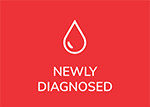
By Brian Koffman, MDCM
We have written extensively and conducted a recent webinar on minimal or measurable residual disease (or MRD), all aimed at patients and caregivers.
Our archived webinar by Dr. Anthony Mato is a clear and helpful introduction to MRD. It’s a great place to start.
Our MRD section on the website offers both basic and more advanced articles.
All our MRD educational efforts are directed at the non-medical reader, but they also endeavor to be a true reflection of what’s happening in professional research and in the cutting edge CLL clinic.
The present MRD landscape is well described in this recent overview article for health care professionals: Minimal Residual Disease Assessment in CLL: Ready for Use in Clinical Routine?
Here are my take-aways from this medical article:
- MRD is increasingly being used in clinical trials.
- The methodologies for testing MRD are evolving and finding less than 1 in 10,000 cells by flow cytometry is today’s standard definition for undetectable minimal or measurable residual disease (uMRD). There is good reason to believe that the deeper levels achievable with next generation gene sequencing (NGS), capable of finding a single cancer cell in a million cells, may be even more valuable, especially with cellular therapies such as CAR-T and transplants.
- MRD is important because there is a good correlation between MRD and progression-free survival (PFS) with certain therapies such as chemo-immunotherapy, venetoclax based treatments, some clinical trials, transplants, and CAR-T. But, there is much less correlation with BTKi, such as ibrutinib or acalabrutinib and PI3Ki, such as idelalisib and duvelisib, where reaching uMRD has a much weaker link with PFS.
- This allows MRD to be increasingly used as a “surrogate marker” in clinical trials for PFS with the appropriate treatments.
- Undetectable MRD is not equivalent to eradicated MRD. Even if you are undetectable MRD in the blood, you may or may not have significant residual disease in unassessed sites, especially in the lymphatic system. CLL nearly always involves multiple body compartments including “blood, bone marrow, lymph nodes, spleen and liver, as well as cerebrospinal fluid, lung, bones, kidneys and skin”.
- While reaching uMRD is great news, many patients can do well with detectable MRD and a percentage of those who achieve uMRD. do relapse.
- Odds are good that MRD measurement will increasingly be used in the clinic.
- Its role in the clinic today is less well-defined but is rapidly changing.
This article is more for the medically sophisticated patients as it’s aimed at physicians, so if you want to dive deeper, click here. There are also many helpful references in the article.
Stay strong, we are all in this together.
Brian
Dr. Brian Koffman, a well-known retired doctor, educator, and clinical professor turned patient has dedicated himself to teaching and helping the CLL community since his diagnosis in 2005. He serves as the Executive Vice President and Chief Medical Officer of the CLL Society Inc.
Originally published in The CLL Society Tribune MRD Special Edition.

















